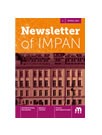Some characterizations of BMO and Lipschitz spaces in the Schrödinger setting
Abstract
We consider the Schrödinger operator $\mathcal L=-\varDelta +V$ on $\mathbb R^d$, $d\geq 3$, where the nonnegative potential $V$ belongs to the reverse Hölder class $RH_s$ for some $s\geq d/2$. A real-valued function $f\in L^1_{\mathrm{loc}}(\mathbb R^d)$ belongs to $\mathrm{BMO}_{\rho ,\theta }(\mathbb R^d)$ with $0 \lt \theta \lt \infty $ if $$\|f\|_{\mathrm{BMO}_{\rho ,\theta }}:=\sup_{B(x_0,r)}\bigg(1+\frac{r}{\rho (x_0)}\bigg)^{-\theta}\bigg(\frac{1}{|B(x_0,r)|}\int_{B(x_0,r)}|f(x)-f_{B}|\,dx\bigg) \lt \infty,$$ where the supremum is taken over all balls $B(x_0,r)\subset \mathbb R^d$, $\rho (\cdot )$ is the critical radius function in the Schrödinger context and $$f_{B}:=\frac{1}{|B(x_0,r)|}\int_{B(x_0,r)}f(y)\,dy.$$ A real-valued function $f\in L^1_{\mathrm{loc}}(\mathbb R^d)$ belongs to $\mathrm{Lip}_{\beta}^{\rho ,\theta }(\mathbb R^d)$ with $0 \lt \beta \lt 1$ and $0 \lt \theta \lt \infty $ if $$\|f\|_{\mathrm{Lip}_{\beta }^{\rho,\theta }}:=\sup _{B(x_0,r)}\biggl(1+\frac{r}{\rho (x_0)}\bigg)^{-\theta} \bigg(\frac{1}{|B(x_0,r)|^{1+\beta/d}}\int _{B(x_0,r)}|f(x)-f_{B}|\,dx\bigg) \lt \infty.$$ It can be easily seen that $\mathrm{BMO}_{\rho ,\theta }(\mathbb R^d)$ (or $\mathrm{Lip}_{\beta }^{\rho ,\theta }(\mathbb R^d)$) is larger than the classical BMO (or Lipschitz) space. In this paper, we give some new characterizations of BMO and Lipschitz spaces associated with the Schrödinger operator $\mathcal L$. We extend some previous works of Bongioanni–Harboure–Salinas and Liu–Sheng to the weighted case. The classes of weights considered here are larger than the classical Muckenhoupt classes.









